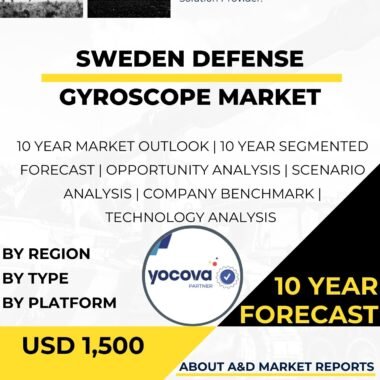Description
The South Korea defense gyroscope market is a critical and rapidly growing segment within the nation’s defense industry. Gyroscopes are essential devices used in various defense applications, including navigation, guidance, stabilization, and targeting systems. This article provides an in-depth analysis of the current state, growth drivers, challenges, key players, and future prospects of the South Korea defense gyroscope market.
The historical context of the South Korea defense gyroscope market can be traced back to the nation’s efforts to modernize its defense forces and strengthen its military capabilities. As South Korea faced complex security challenges and the need to enhance its defense systems, the adoption and development of advanced gyroscopes became crucial for the defense industry.
In the current landscape, the South Korea defense gyroscope market has witnessed significant growth and diversification. It encompasses a wide range of gyroscopic technologies, including mechanical gyroscopes, fiber optic gyroscopes, and MEMS (Micro-Electro-Mechanical Systems) gyroscopes, used in various defense platforms such as aircraft, ships, tanks, and missiles.
One of the primary growth drivers for the South Korea defense gyroscope market is the country’s focus on indigenization and developing homegrown defense technologies. The government’s commitment to fostering domestic defense capabilities has led to increased investments in research and development, driving innovation in gyroscope technology.
Moreover, advanced gyroscopes play a crucial role in enhancing the accuracy, stability, and performance of defense systems. From precise navigation and targeting in guided missiles to stabilizing aiming systems in combat vehicles, gyroscopes are integral to the success of various military operations.
Furthermore, South Korea’s strategic location in Northeast Asia and the presence of potential adversaries underscore the importance of having a robust defense gyroscope infrastructure. Advanced gyroscopes are essential for maintaining precision and situational awareness during military missions.
The South Korea defense gyroscope market also benefits from the nation’s strong manufacturing capabilities and skilled workforce. With a well-established electronics and precision engineering industry, South Korea is well-positioned to develop and manufacture high-quality gyroscopes.
Additionally, strategic collaborations with international gyroscope suppliers and technology providers have been instrumental in accessing advanced technologies and expertise. Partnering with established global companies allows for technology transfer and enables South Korea to leverage best practices in gyroscope development.
However, the market also faces several challenges. One of the primary challenges is the constant need for innovation and technological advancement. As defense requirements evolve and adversaries develop more sophisticated tactics, developing gyroscopes with enhanced capabilities, accuracy, and reliability requires continuous research and development efforts.
Moreover, the defense gyroscope market is highly competitive, with established international suppliers dominating the global market. To maintain competitiveness, South Korean gyroscope manufacturers must focus on specialization, providing unique gyroscope solutions tailored to specific defense requirements.
Additionally, implementing advanced gyroscopes in defense systems may pose technical challenges. Integrating gyroscope systems into existing platforms and overcoming interoperability issues may require significant engineering expertise.
To address these challenges and ensure sustained growth, South Korea’s defense industry must prioritize research and development in gyroscope technology. Investing in advanced engineering capabilities will enable the country to develop cutting-edge gyroscopes, maintaining a competitive edge in the global market.
Furthermore, fostering strategic collaborations with international partners can enhance technological capabilities and provide access to broader markets for South Korean defense gyroscopes. Collaborating with allied nations fosters knowledge exchange and strengthens mutual defense capabilities.
The South Korean government’s continued support for the defense gyroscope market is crucial for promoting growth and innovation. Financial backing for research and development initiatives, as well as procurement programs for advanced gyroscopes, will drive the adoption of state-of-the-art technology in defense systems.
Moreover, promoting a skilled workforce and providing training and education in gyroscope technology will enhance the local talent pool and create a sustainable ecosystem for the South Korea market.
In conclusion, the South Korea defense gyroscope market is a critical and rapidly growing segment within the nation’s defense industry. Driven by the country’s focus on indigenization, developing homegrown defense technologies, and enhancing the capabilities of defense systems, the market continues to grow steadily. However, challenges related to innovation, global competition, technical integration, and export regulations require proactive measures from the government and the defense industry to ensure sustained growth and competitiveness in the global market. By investing in research and development, fostering strategic collaborations, and promoting a skilled workforce, South Korea can strengthen its position as a key player in the global defense gyroscope market and enhance its overall defense capabilities.




